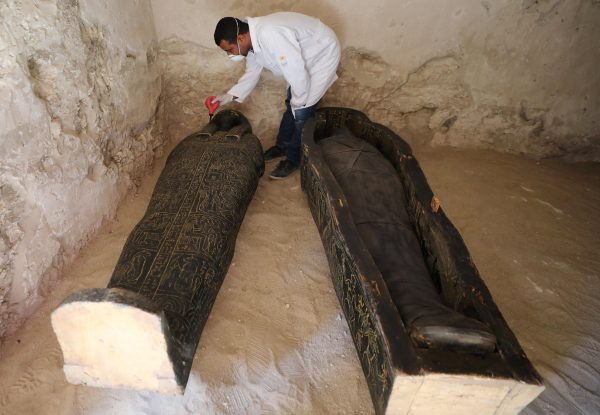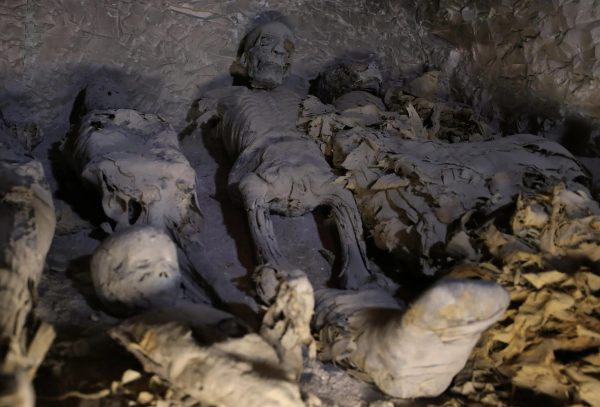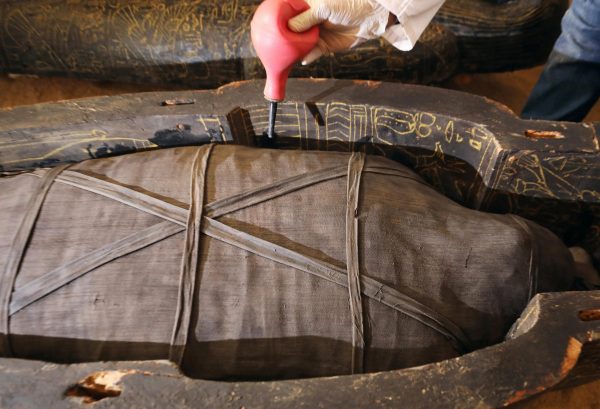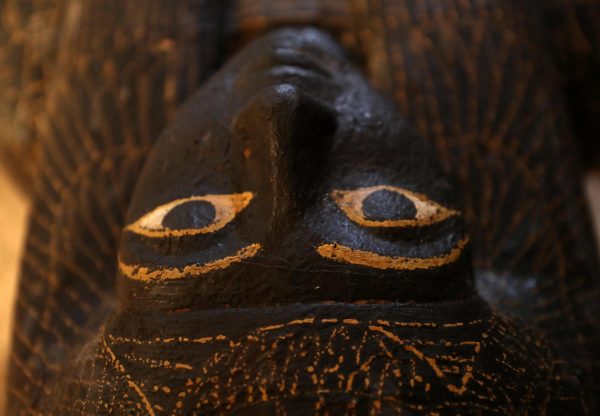In a historic unveiling, a well-preserved mummy was revealed inside an unopened coffin in Luxor, Southern Egypt. The coffin is believed to house the remains of a priest who played a crucial role in overseeing the mummification process, along with his wife.

The tomb, located on the West Bank of the Nile, belonged to Thaw-Rakht-If, the overseer of the mummification shrine at the Mut temple. The discovery was made by a French-led mission earlier this month in the northern area of El-Asasef, where two ancient coffins were found.
The first coffin had already been opened and examined by Egyptian antiquities officials. The second coffin, which remained unopened, was revealed to the world’s media in a groundbreaking event. This marks the first time an unopened sarcophagus has been unveiled in such a manner.

The unveiled sarcophagus is believed to be of rishi-style, dating back to the 17th dynasty, while the other sarcophagus is from the 18th dynasty, a period known for some of Egypt’s most famous pharaohs, including Tutankhamun and Ramses II.
Inside the tomb, five colored masks and 1,000 Ushabti statues—miniature figurine servants placed to serve the deceased in the afterlife—were discovered.

The tomb’s excavation involved the removal of 300 meters of rubble over five months, uncovering not only the sarcophagi but also mummies, skeletons, and skulls dating back to the Middle Kingdom almost 4,000 years ago.
This unveiling adds to the series of ancient discoveries in Egypt throughout the year, and officials hope it will contribute to boosting tourism in the region.

The findings offer valuable insights into the practices of ancient Egyptian burial and mummification, shedding light on the cultural and religious significance attached to these rituals.





